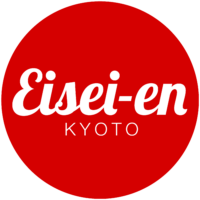Native Japanese
DECIDUOUS BONSAI SPECIES
NATIVE JAPANESE DECIDOUS BONSAI
There are a number of fantastic deciduous plant species native to Japan that lend themselves well to bonsai art. In this section we will look at a handful of these species that can be lumped together into one group relative to their basic maintenance and care. Covered here are the Japanese Flowering Apricot (Prunus mume), Stewartia (Stewartia monadelpha) and Chinese Quince (Pseudocydonia sinensis - obviously not native to Japan, but still commonly used). Each of these species can be partially defoliated and rapidly developed into quality bonsai tree art.
Pruning
For Apricot, Stewartia and Chinese Quince, allow the new shoots to elongate in spring until the new growth hardens off sometime in May. At that point, it is possible to cut the shoots back to two leaves and then perform partial outer canopy defoliation, removing 80-90% of the leaves from the outer canopy of the tree. This will induce a second flush of growth, which will be smaller in size and produce more branch ramification in a single growing season.
As the second flush emerges, allow the secondary shoots to elongate again to 6-8 leaves and then cut them back to two. Repeat this process throughout the growing season. Do not prune in fall, though, as this may produce another flush of growth that will not harden off before the first frost, potentially resulting in branch dieback.
For a more in-depth look at pruning techniques, please consider joining our online bonsai learning platform Bonsai-U!
Wiring and Styling
Wiring and styling these species is best done either in the winter, just after the leaves have fallen or in late spring, just after performing partial outer canopy defoliation. Keep in mind that if you wire in winter, it is best to avoid heavily bending branches, as this can cause dieback in the subsequent spring season. Utilize aluminum wire for these species, as it is softer on the bark and will cause less damage. Wire will likely need to be removed within 1 to 2 months after application to avoid biting into the branches.
Repotting
Repotting Apricot, Stewartia, and Chinese Quince bonsai is best done in early Spring just as the buds begin to swell. This usually happens sometime in March in the northern hemisphere. Chinese Quince are likely to produce swelling buds much earlier, though, in February for example, so repot them when these signs appear. When repotting, it is okay to remove all of the original soil, as these species are quite strong and respond well to this treatment. Also, it is possible to cut up to 50% of the roots without subsequently weakening these species. Keep in mind, the older the tree, the less roots should be cut to avoid weakening the plant.
Use a slightly more water-retentive soil medium, such as Aoki Blend or a mixture of akadama, lava rock and pumice in a ratio of 2:1:1. The soil particle size should be approximately 3/16 inch (4mm) for medium and large trees, and slightly small for shohin size bonsai.
Watering
These bonsai species do well if kept slightly moist. As a general guideline, check the water twice per day during the growing season from early Spring through late Fall. Most deciduous bonsai will need to be watered at least once per day, and sometimes twice per day, during this period. Water as the soil surface becomes dry and avoid misting the foliage, as this can lead to burn and disease. In the winter months, check once per day and water as needed, which could be as little as once every 5-7 days depending on the climate and the individual deciduous bonsai.
Fertilization
Fertilizing deciduous bonsai will be dependent on the stage of development of the tree. For example, younger trees are best fertilized with a high-nitrogen synthetic fertilizer to rapidly increase their size and vigor, starting from the early spring through the end of the growing season. Older, more refined deciduous bonsai should be fertilized with a milder organic fertilizer with a lower nitrogen value. This fertilizer should only be applied after the first set (or second set) of growth has completely hardened off so as to avoid producing overly large leaves. For example, if you plan to defoliate them in May, do not apply fertilizer until after the second flush of growth has completely hardened off later in summer.
Placement
Deciduous bonsai trees do best if kept in full sun in the spring as the new growth is emerging. This helps produce more vigorous growth as well as smaller leaves. As the temperatures heat up in summer, though, place them in partial shade. At Eisei-en, we place our deciduous bonsai under 30-40% shade cloth starting in early June through late September.
Pests/Diseases
Deciduous bonsai are susceptible to a number of pests including aphids, black spot and cottony scale. The most common diseases that affect these species are verticillium, rust and powdery mildew. For a comprehensive understanding of what fungicides and pesticides to use on your deciduous bonsai, please join Bonsai-U!
LEARN MORE!
If you would like to learn more about how to care for native Japanese deciduous bonsai species, please consider joining our online learning platform Bonsai-U. Each week a new tutorial or live Q&A session will be uploaded to the site, providing you with in-depth information about bonsai design, care, maintenance and display. We look forward to seeing you soon on the platform!

